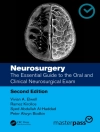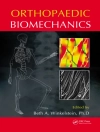In 1920s, Otto Warburg described the phenomenon of ‘aerobic glycolysis’, the ability of tumour cells to convert glucose to lactate in the presence of normal oxygen conditions. Warburg’s hypothesis of an altered metabolism in cancer cells found no immediate acceptance, though it was latter confirmed for most human tumours. With the advent of molecular biology the focus in tumour research has shifted towards the search for oncogenes. However, the interest in cancer molecular profiling eventually led to a renaissance of the Warburg effect trying to combine genetic alterations with effects on metabolism with the help of modern analytic technologies to rapidly analyze broad varieties of metabolites in various tissues and bodyfluids (metabonomics).
Daftar Isi
Mitochondria and Cancer.- Role of the Metabolic Stress Responses of Apoptosis and Autophagy in Tumor Suppression.- The Interplay Between MYC and HIF in the Warburg Effect.- Using Metabolomics to Monitor Anticancer Drugs.- Biomarker Discovery for Drug Development and Translational Medicine Using Metabonomics.- Pyruvate Kinase Type M2: A Key Regulator Within the Tumour Metabolome and a Tool for Metabolic Profiling of Tumours.- Molecular Imaging of Tumor Metabolism and Apoptosis.- Minimally Invasive Biomarkers for Therapy Monitoring.- Use of Metabolic Pathway Flux Information in Anticancer Drug Design.- Cancer Diagnostics Using 1H-NMR-Based Metabonomics.- Human Metabolic Phenotyping and Metabolome Wide Association Studies.- Defining Personal Nutrition and Metabolic Health Through Metabonomics.












